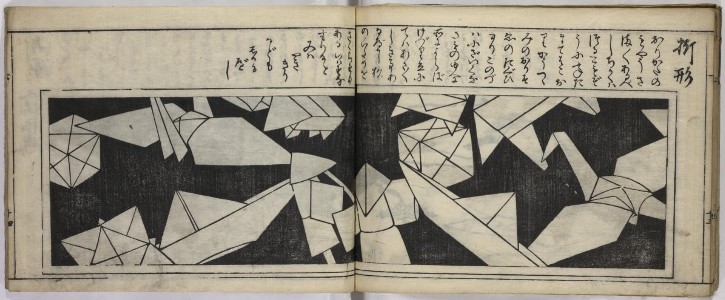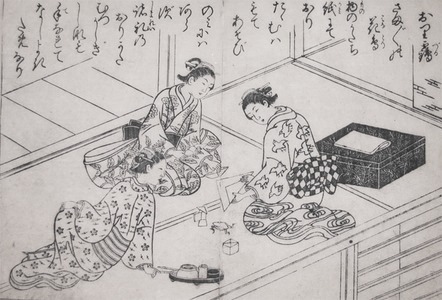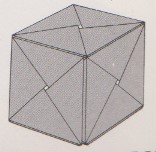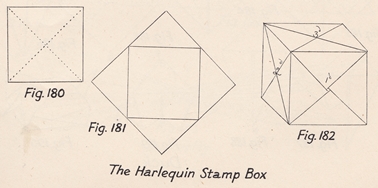| The Public Paperfolding History Project
Last updated 17/7/2024 x |
|||||||
| The Tematebako / The Cubical Box | |||||||
| Diagrams for this design can be found here | |||||||
| This
page is being used to collect information about the
history of the design known as the Tematebako (treasure
chest), which is made by combining six Thread Containers
to create a cube. Each face of the cube can be opened
independently to give access to the interior space.
Please contact me if you know any of this information is
incorrect or if you have any other important information
that should be added. Thank you. ********** In Japan (and in publications by Japanese authors) 1734 Two drawings of a cube, from slightly different angles, are included in a print in the book 'Ranma Zushiki' by Hayato Ohoka, which was published in 1734. The wording calls it a 'tematebako' or 'treasure chest'. According to Kunihiko Kasahara, writing in 'Extreme Origami', published by Sterling in 2002 (but originally published in German in 2001 by Augustus Verlag) the modular method was reconstructed by Masao Okamura. However, there is nothing in the print itself to identify the specific modular method by which the cube would have been made, and, as far as I am aware, there are no other contemporary references that would help. It is possible therefore that this cube is not the cube we call the Tematebako today.
The name Tematebako derives from a Japanese legend, somewhat similar to the Greek tale of Pandora's Box. Details of this story can also be found in Kunihiko Kasahara's book ********** 1752 This print, which appears to be by the Japanese print designer Nishikawa Sukenobu (1671-1750), shows women folding paper. Among the designs they have folded is a cube. In Kunihiko Kasahara's book 'The Art and Wonder of Origami', Apple Press, 2004, he describes a print showing Komoso, the Frog and a cube which is said to come from the book 'Onna-you kyokun ehon hana-no-en', published in 1752. Kasahara does not name the author and I have not been able to verify that this is the print he is describing, although it seems likely that this is the case. If so it must have been published posthumously. Kasahara identifies this cube as the Tematebako, although he does not say on what basis the identification is made.
********** 1849 In his book 'The Art and Wonder of Origami', Apple Press, 2004, Kunihiko Kasahara states that the Tematebako was pictured on the outside cover of the picture book 'Jiraiya Gouketsu Tan' by Kunisada Utagawa. ********** 1932 According to information received from Koshiro Hatori diagrams for the Tematebako first appear in 'Origami (Part 2)' by Isao Honda, which was published in Japan in 1932. I have not seen a copy of this work. ********** 1944 In 'Origami Shuko' by Isao Honda, which was published in 1944.
********** 1965 The Tematebako appears as the 'Cubical Box' in 'The World of Origami' by Isao Honda, which was published in the USA by Japan Publications Trading Company in 1965.
********** In Europe and the Americas 1936 Diagrams for a 'Harlequin Stamp Box' appear in 'Paper Toy Making' by Margaret Campbell, which was first published by Sir Isaac Pitman and Sons Ltd in London, probably in 1937, although both the Foreword and Preface are dated 1936 (which argues that the book was complete at that date). Here, the Thread Containers are referred to as 'Envelopes'. The name Stamp Box derives from the idea that the 'Envelopes' might be used to hold stamps rather than thread.
********** |
|||||||




